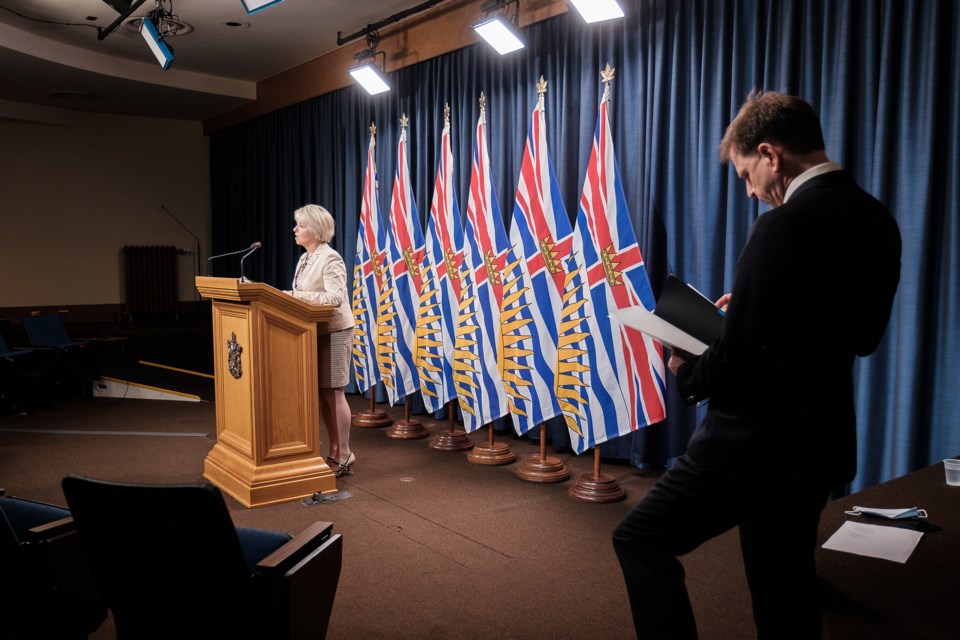News that the B.C. government has been deliberately withholding much-sought-after COVID-19 data from the public is equal parts infuriating and unsurprising.
Vancouver Sun data journalist Nathan Griffiths revealed Thursday that the B.C. Centre for Disease Control produces weekly internal reports on COVID-19 case counts, variants and transmission rates that are four times longer and more detailed than the versions eventually presented publicly.
Everyone sort of knew this has been the case for the past 14 months - that the province is sitting on a massive amount of data on how COVID-19 is being transmitted, and doesn’t want to let the public see it. But Griffiths’ story was the first actual confirmation of the extent of the discrepancy between what is public and private.
Among the internal data items that get watered down are neighbourhood-level reports on the virus, which drill into what sections of what communities are seeing the best and worst transmission rates. The data exists in the internal BCCDC reports, but never in the public.
The B.C. government has for more than a year refused to provide that level of information when asked, despite many other provinces - and some cities like Toronto - proactively sharing neighbourhood case counts.
The arguments have varied.
Initially the government suggested doing so would violate the privacy of people in smaller communities by potentially identifying who has COVID-19. That didn’t make a lot of sense, unless you lived in a remote fishing village.
Then there were suggestions the data might further discriminate against First Nations, because some communities like the Cowichan Tribes were facing racist blowback from non-indigenous neighbours as they wrestled with outbreaks on their reserves.
There was something to that sensitivity at the outset of the outbreak, but First Nations were among the first groups to be vaccinated, and concerns about outbreaks have long since passed.
The most persistent argument the government has advanced throughout the pandemic is the one it most often deploys when things get complicated: Health officials don’t have the time, resources, or staff required to prepare the data people want.
If you push back too hard on that excuse, officials quickly pivot to ask why you’d possibly want health experts who could be fighting the virus and saving lives to put down their tools to gather data for journalists.
It’s an absurd argument.
With a civil service of almost 40,000 people, and a small army of communications professionals, the B.C. government can most definitely walk and chew gum at the same time when it comes to handling a pandemic and answering media requests for data about the most significant health crisis in our history.
The real reason why B.C. keeps its mountain of precious COVID-19 data behind closed doors is about control. Control of the flow of information. Control of the message. Control of the timing. And ultimately - the government hopes - control of people’s behaviour.
This cuts both ways.
Proponents of access to all the data argue people would change their behaviour for the better if only they knew in what communities the virus was spreading fastest, and how. The argument is entire neighbourhoods would crack down harder and redouble efforts to follow the rules if they could track their progress at a postal code level.
But Provincial Health Officer Dr. Bonnie Henry has repeatedly suggested that she fears the opposite may also be true: if people knew which communities had the smallest case counts, those residents would begin to relax on things like public distancing and limits on social gatherings, in turn sparking more outbreaks.
It’s hard to tell which side of the argument carries more weight. Perhaps they are not mutually exclusive.
At the centre of this debate are two people - Henry and Health Minister Adrian Dix.
They’ve placed a great emphasis on speaking as one voice for the province during the crisis, in joint briefings, to avoid giving the public contradictory information or mixed messages.
It has meant B.C. has avoided the war of words seen between some health officials and politicians in other provinces.
It has also centralized power in two locations and with two people. Nobody else, from the health authorities through to the cabinet table, speaks on COVID-19 without clearing it first through Dix and Henry.
Nor can anybody else share data. This creates an information logjam.
There might be oodles of data floating around in spreadsheets at the BCCDC, but there it stays, unless Dix or Henry agree to share it first.
For 14 months, they have mostly declined to do so. It will be interesting to see if this leak, and the criticism that flows from it, is enough to change their minds.
Rob Shaw has spent more than 13 years covering BC politics, now reporting for CHEK News and writing for The Orca. He is the co-author of the national best-selling book A Matter of Confidence, and a regular guest on CBC Radio.
SWIM ON:
- Rob Shaw last wrote that in just one year, hundreds of millions have been spent on housing and shelter spaces – and it still isn’t enough.
- Last year, Dene Moore tackled the spectre of myth-information in the pandemic.
- COVID-19's effects on the workplace are well known - but will everything go back the way it was before the pandemic? Angela Gismondi ponders what will go back to normal, and what is already the new normal.



